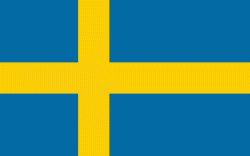Swedish Museum of Natural History (Naturhistoriska riksmuseet)
The Swedish Museum of Natural History (Naturhistoriska riksmuseet, literally, the National Museum of Natural History), in Stockholm, is one of two major museums of natural history in Sweden, the other one being located in Gothenburg.
The museum was founded in 1819 by the Royal Swedish Academy of Sciences, but goes back to the collections acquired mostly through donations by the academy since its foundation in 1739. These collections had first been made available to the public in 1786. The museum was separated from the Academy in 1965.
One of the keepers of the collections of the academy during its earlier history was Anders Sparrman, a student of Carl Linnaeus and participant in the voyages of Captain James Cook. Another important name in the history of the museum is the zoologist, paleontologist and archaeologist Sven Nilsson, who brought the previously disorganised zoological collections of the museum into order during his time as keeper (1828–1831) before returning to Lund as professor.
The present buildings for the museum in Frescati, Stockholm, was designed by the architect Axel Anderberg and completed in 1916, topped with a dome. it is the largest museum building in Sweden. The main campus of Stockholm University was later built next to the museum.
The museum has Sweden's first purpose-built IMAX Dome cinema called Cosmonova, which opened in a dedicated annex of the museum in 1993. The cinema is also the largest planetarium in Sweden.
The Index Herbariorum code assigned to this museum is S and it is used when citing housed specimens.
* List of museums in Stockholm
The museum was founded in 1819 by the Royal Swedish Academy of Sciences, but goes back to the collections acquired mostly through donations by the academy since its foundation in 1739. These collections had first been made available to the public in 1786. The museum was separated from the Academy in 1965.
One of the keepers of the collections of the academy during its earlier history was Anders Sparrman, a student of Carl Linnaeus and participant in the voyages of Captain James Cook. Another important name in the history of the museum is the zoologist, paleontologist and archaeologist Sven Nilsson, who brought the previously disorganised zoological collections of the museum into order during his time as keeper (1828–1831) before returning to Lund as professor.
The present buildings for the museum in Frescati, Stockholm, was designed by the architect Axel Anderberg and completed in 1916, topped with a dome. it is the largest museum building in Sweden. The main campus of Stockholm University was later built next to the museum.
The museum has Sweden's first purpose-built IMAX Dome cinema called Cosmonova, which opened in a dedicated annex of the museum in 1993. The cinema is also the largest planetarium in Sweden.
The Index Herbariorum code assigned to this museum is S and it is used when citing housed specimens.
* List of museums in Stockholm
Map - Swedish Museum of Natural History (Naturhistoriska riksmuseet)
Map
Country - Sweden
 |
 |
| Flag of Sweden | |
Nature in Sweden is dominated by forests and many lakes, including some of the largest in Europe. Many long rivers run from the Scandes range through the landscape, primarily emptying into the northern tributaries of the Baltic Sea. It has an extensive coastline and most of the population lives near a major body of water. With the country ranging from 55°N to 69°N, the climate of Sweden is diverse due to the length of the country. The usual conditions are mild for the latitudes with a maritime south, continental centre and subarctic north. Snow cover is infrequent in the densely populated south, but reliable in higher latitudes. Furthermore, the rain shadow of the Scandes results in quite dry winters and sunny summers in much of the country.
Currency / Language
| ISO | Currency | Symbol | Significant figures |
|---|---|---|---|
| SEK | Swedish krona | kr | 2 |
| ISO | Language |
|---|---|
| FI | Finnish language |
| SE | Northern Sami |
| SV | Swedish language |















